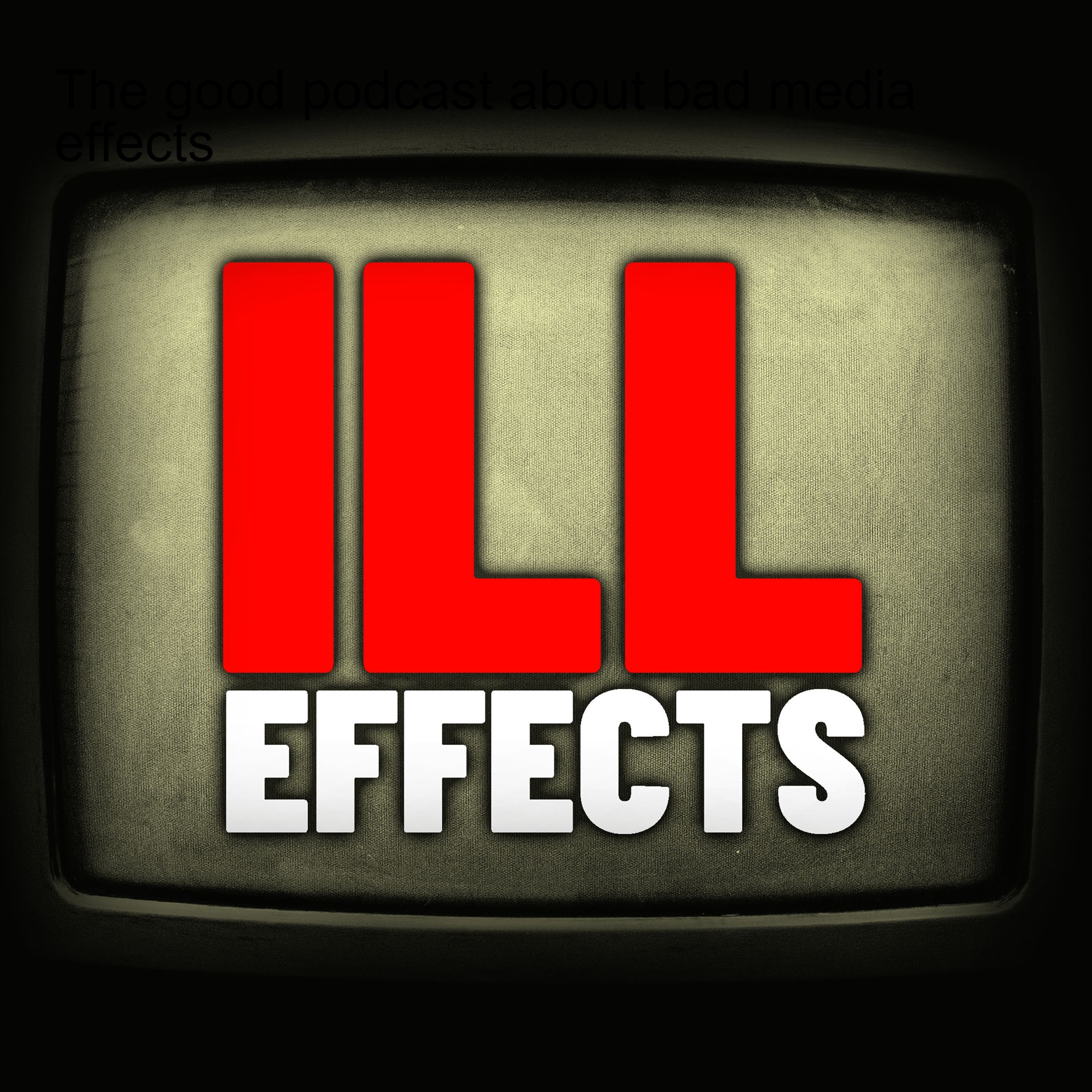Episodes
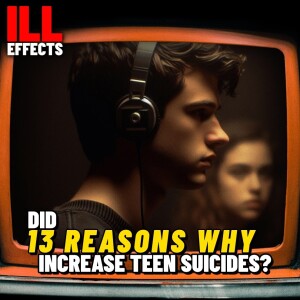
Thursday Jun 06, 2024
Did 13 Reasons Why increase teen suicides?
Thursday Jun 06, 2024
Thursday Jun 06, 2024
Can media representations of suicide really be “contagious”, driving vulnerable audiences to end their own lives? Rich introduces Ben to a frustratingly large field of psychologists, counsellors and youth charities who made this argument about the Netflix series 13 Reasons Why. We dive head-first into both the controversy and the research behind it, to figure out why so many smart, well-intentioned people keep getting this issue so wrong.
CONTENT WARNING: this episode includes discussion of suicide and its causes, clips where people discuss their suicidal feelings. It also contains passing references to sexual assault.
If you or someone you know is having suicidal feelings, please seek help immediately. If you are in the UK, the following hotlines all provide support free of charge:
- Samaritans: 116 123 (24 hours)
- NHS: 111 (24 hours)
- SANEline: 0300 304 7000 (4.30pm-10pm)
- National Suicide Prevention Helpline UK: 0800 689 5652 (6pm-midnight)
- Campaign Against Living Miserably (CALM): 0800 58 58 58 (5pm-midnight)
- Papyrus (for those under 35 and struggling with suicidal feelings, or concerned about a young person who is struggling): 0800 068 4141 (24 hours)
- Switchboard (support line for any matters relating to LGBTQIA+ identity): 0800 119 100 (10am-10pm)
If you would prefer not to talk over the phone, the following services are available:
- Samaritans: email jo@samaritans.org
- Shout (mental health support): Text SHOUT to 85258
- Papyrus (for those under 35 and struggling with suicidal feelings, or concerned about a young person who is struggling): email pat@papyrus-uk.org or text 07786 209 697
- Switchboard (LGBTQIA+ support service): Chat service via their website at switchboard.lgbt (after 5pm), or email chris@switchboard.lgbt
For listeners in countries outside of the UK, a useful list of hotlines and other support resources can be found here: https://en.wikipedia.org/wiki/List_of_suicide_crisis_lines#Crisis_lines_by_country
Credits:
Hosts – Rich McCulloch and Ben Litherland
Music by - Brutalust (Colin Frank and Maria Sappho), recorded and mixed by Joe Christman
Creative producer – Rachel Wood
Technical producer – Caroline Pringle
Technical production – Colin Frank

Thursday May 23, 2024
Did pro wrestling make kids try this at home?
Thursday May 23, 2024
Thursday May 23, 2024
After a defence lawyer blamed the killing of a six-year-old on pro wrestling, the Parents Television Council went to war with the World Wrestling Federation. Lifelong pro wrestling fan, Ben, talks Rich through this bad blood feud: in one corner “family values” and in the other corner the sex and violence of “attitude era” pro wrestling. We explore the increasingly fraught tactics used by both organizations, and, surprisingly, what the battle tells us about modern culture wars, the American right, and Donald Trump. Let’s get ready to rumblllleeee.
Show Notes:
Bozell, B (2023) Free Speech Week calls for a return to First Amendment liberties. Washington Examiner. Oct. 20.
Calvert, C., & Richards, R. D. (2010). The Parents Television Council Uncensored: An Inside Look at the Watchdog of the Public Airwaves and the War on Indecency with Its President, Tim Winter. Hastings Comm. & Ent. LJ, 33, 293
Dale, M. J. (2003). Making Sense of the Lionel Tate Case. Nova L. Rev., 28, 467.
Farhi, P (2002) TV Watchdog Apologizes for False Claims on Wrestling. The Washington Post. 9th July.
Foley, M (2001) Foley Is Good: And the Real World Is Faker Than Wrestling. Regan Books.
Lowney, K. S. (2003). Wrestling with Criticism: The World Wrestling Federation's Ironic Campaign against the Parents Television Council. Symbolic Interaction, 26(3), 427-446.
Sagba, C (2000) Vince McMahon Talks About Suing PTC and Negotiations with WCW!, IGN, June 18th,
Sammond, N. (2005). Squaring the family circle: WWF Smackdown assaults the social body. In Sammond, N. (Ed.) Steel chair to the head: the pleasure and pain of professional wrestling. Duke University Press, pp.132-166.
Specer, T (2000) Is Pro Wrestling to Blame for girls death? South Coast Today. 16th April.
[Video] The Rock Confronts Right to Censor At Smackdown
Note: Journal articles are often behind paywalls. If you don't have institutional access but would like a copy of these papers please email Illeffectspod@gmail.com and we will happily send you a copy
Credits:
Hosts – Rich McCulloch and Ben Litherland
Music by - Brutalust (Colin Frank and Maria Sappho), recorded and mixed by Joe Christman
Creative producer – Rachel Wood
Technical producer – Caroline Pringle
Technical production – Colin Frank

Thursday May 09, 2024
Does Cuties sexualise young girls?
Thursday May 09, 2024
Thursday May 09, 2024
In 2020, a French indie movie called Cuties somehow found itself at the epicentre of the US culture wars. Outraged conservatives accused the filmmakers and Netflix of encouraging paedophilia and stoking the fires of global child sex trafficking trade. But were they right? Rich’s deep dive into the controversy takes Ben on a journey through “sexualisation,” twerking, Tucker Carlson’s gormless face, School of Rock, QAnon, and yes... even paedophilic robots.
Show Notes:
Sources and links
Barker, Martin, Jane Arthurs, Jane and Ramaswami Harindranath (2001) The Crash Controversy: Censorship Campaigns and Film Reception. Wallflower Press.
Barker, Martin (2009) “The Challenge of Censorship: ‘Figuring’ Out the Audience,” Velvet Light Trap, 63.
Barker, Martin, with Thomas Austin (2000) From Antz to Titanic: Reinventing Film Analysis. Pluto Press.
Buchanan, Vern (2020) “Buchanan Slams Netflix Film ‘Cuties’ for Exploiting Young Girls,” September 13. [Press Release]
Carlson, Tucker (2020) “From ‘WAP’ to an 11-year-old twerking girl,” Tucker Carlson Tonight, August 21. [Twitter/X video clip, posted by @ColumbiaBugle]
Carlson, Tucker (2020) “Netflix Slammed for Sexualizing Young Girls,” Tucker Carlson Tonight, September 11. [Facebook video]
Cassam, Quassim (2019) Conspiracy Theories. Polity.
Cruz, Ted (2020) “SEN. CRUZ CALLS FOR CRIMINAL INVESTIGATION INTO NETFLIX’S ‘CUTIES’,” September 11. [Press Release]
Dickson, E.J. (2020) “How ‘Cuties’ Is Fueling the Far Right’s Obsession With Pedophilia,” Rolling Stone, September 14.
Dickson, E.J. (2020) “Netflix’s Cuties Was Just Charged With Lewdness. But That’s Not the Full Story,” Rolling Stone, October 8.
Egan, R. Danielle (2013) Becoming Sexual: A Critical Appraisal of the Sexualization of Girls. Polity Press.
Egan, R. Danielle and Gail L. Hawkes (2007) “Producing the Prurient through the Pedagogy of Purity: Childhood Sexuality and the Social Purity Movement,” Journal of Historical Sociology, 20(4).
Egan, R. Danielle and Gail L. Hawkes (2008) “Endangered Girls and Incendiary Objects: Unpacking the Discourse on Sexualization," Sexuality and Culture, 12.
Egan, R. Danielle and Gail L. Hawkes (2008) “Girls, Sexuality and the Strange Carnalities of Advertisements: Deconstructing the Discourse of Corporate Paedophilia,” Australian Feminist Studies, 23(57).
Egan, R. Danielle and Gail L. Hawkes (2009) “The problem with protection: Or, why we need to move towards recognition and the sexual agency of children,” Continuum, 23(3).
Egan, R. Danielle and Gail L. Hawkes (2013) “Disavowal and foundational fantasies: A psychosocial exploration of the class, race and the social construction of the sexual child in the Anglophone West,” Sexualities, 16(5/6).
Gallagher, Danny (2022) “District Attorney Lucas Babin? Where Have We Heard That Name? Oh, Right! School of Rock!” Dallas Observer, April 4.
Givas, Nick (2020) “Rep. Ken Buck calls for investigation into 'exploitation of children' in letter to DOJ regarding Netflix film 'Cuties',” Fox News, September 14.
Grater, Tom (2020) “‘Cuties’ Director Says She Received Death Threats After Netflix Poster Backlash; Ted Sarandos Called Her To Apologize,” Deadline, September 3. [Contains images of the contrasting French and American posters]
Gray, Jonathan (2010) Show Sold Separately: Promos, Spoilers, and Other Media Paratexts. New York University Press.
McCulloch, Richard, and William Proctor (2023) “The Cuties Controversy: Prefiguration, ‘Sexualisation’ and the New Conspiracism,” Participations, 19(3).
Netflix (2020) “Cuties | Official Trailer | Netflix,” [YouTube]
Paasonen, Susanna, et al. (2020) Objectification: On the Difference between Sex and Sexism. Routledge.
Rosen, Christopher (2020) “Netflix Apologizes for “Inappropriate” Cuties Poster That Sexualized Child Stars,” Vanity Fair, August 20.
Rosenblum, Nancy L., and Russell Muirhead (2019) A Lot of People Are Saying: The New Conspiracism and the Assault on Democracy. Princeton University Press.
Schiffer, Zoë (2021) “Netflix scrambled internally to suppress a controversial movie from search results,” The Verge, October 27.
Note: Journal articles are often behind paywalls. If you don't have institutional access but would like a copy of these papers please email Illeffectspod@gmail.com and we will happily send you a copy
Credits:
Hosts – Rich McCulloch and Ben Litherland
Music by - Brutalust (Colin Frank and Maria Sappho), recorded and mixed by Joe Christman
Creative producer – Rachel Wood
Technical producer – Caroline Pringle
Technical production – Colin Frank
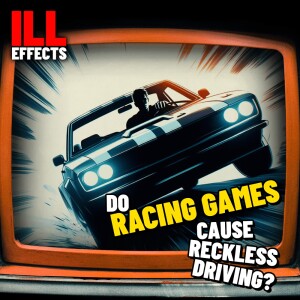
Thursday Apr 25, 2024
Do racing games cause reckless driving?
Thursday Apr 25, 2024
Thursday Apr 25, 2024
From Death Race to Grand Theft Auto, driving games have long fuelled claims that players might be inspired to start mowing down pedestrians outside of the game. Starting with a story about a Toronto police officer linking a hit and run to a copy of Need for Speed found on the offender’s passenger seat, Ben talks Rich through the surprisingly longstanding history of links between video games and reckless driving. We encounter early arcade video games, clowns being run over at anti-car carnivals, and Adam West’s Batman doing British road safety videos. Crash! Bang! Wallop! What a podcast!
Show Notes:
[Video] 1967 Adam West Batman UK Public Service Announcement
Beullens, K., Roe, K., & Van den Bulck, J. (2008). Video games and adolescents' intentions to take risks in traffic. Journal of Adolescent Health, 43(1), 87-90.
Carsten, O., & Jamson, A. H. (2011). Driving simulators as research tools in traffic psychology. In Handbook of traffic psychology (pp. 87-96). Academic Press.
[Video] Death Race News Report
Fischer, P., Greitemeyer, T., Morton, T., Kastenmüller, A., Postmes, T., Frey, D., ... & Odenwälder, J. (2009). The racing-game effect why do video racing games increase risk-taking inclinations. Personality and Social Psychology Bulletin, 35(10), 1395-1409.
Howard, J., Bowden, V. K., & Visser, T. (2023). Do action video games make safer drivers? The effects of video game experience on simulated driving performance. Transportation research part F: traffic psychology and behaviour, 97, 170-180.
Hull, J. G., Draghici, A. M., & Sargent, J. D. (2012). A longitudinal study of risk-glorifying video games and reckless driving. Psychology of Popular Media Culture, 1(4), 244.
Kocurek, C. A. (2012). The agony and the Exidy: a history of video game violence and the legacy of Death Race. Game Studies, 12(1).
Lumsden, K. (2013). Boy racer culture: Youth, masculinity and deviance. Routledge.
(2006) “NFS found in fatal drag-racing car crash”, Game Spot, Jan 26th.
Norton, P. D. (2007). Street rivals: Jaywalking and the invention of the motor age street. Technology and culture, 48(2), 331-359.
Redshaw, S. (2017). In the company of cars: Driving as a social and cultural practice. CRC Press.
Sala, G., Tatlidil, K. S., & Gobet, F. (2018). Video game training does not enhance cognitive ability: A comprehensive meta-analytic investigation. Psychological bulletin, 144(2), 111..
Stinchcombe, A., Kadulina, Y., Lemieux, C., Aljied, R., & Gagnon, S. (2017). Driving is not a game: Video game experience is associated with risk-taking behaviours in the driving simulator. Computers in Human Behavior, 69, 415-420.
Vingilis, E., Seeley, J., Wiesenthal, D. L., Wickens, C. M., Fischer, P., & Mann, R. E. (2013). Street racing video games and risk-taking driving: An Internet survey of automobile enthusiasts. Accident Analysis & Prevention, 50, 1-7.
Note: Journal articles are often behind paywalls. If you don't have institutional access but would like a copy of these papers please email Illeffectspod@gmail.com and we will happily send you a copy
Credits:
Hosts – Ben Litherland & Rich McCulloch
Music by - Brutalust (Colin Frank and Maria Sappho), recorded and mixed by Joe Christman
Creative producer – Rachel Wood
Technical producer – Caroline Pringle
Technical production – Colin Frank
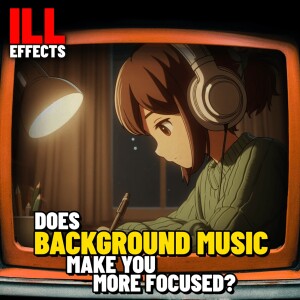
Thursday Apr 11, 2024
Does background music make you more focused?
Thursday Apr 11, 2024
Thursday Apr 11, 2024
Before “deep focus” and “study beats” playlists came muzak—one of the most widespread (and widely hated) forms of music of the 20th Century. But does background music really have the power to improve worker productivity? To dictate our wine preferences? Or, God forbid, even affect how long we spend in our favourite brothel?!? Rich shows Ben that the genre’s history doesn’t always make for easy listening.
Show Notes:
Sources and links:
Advertising Cliche (n.d.) “The Visual Primer of Advertising Cliches: Muzak Corporation” [amazing online archive of historical print ads]
Allan, David (2008) “Sound retailing: A Review of Experimental Evidence on the Effects of Music on Shopping Behavior,” in Tina M. Lowrey, ed. Brick & Mortar Shopping in the 21st Century. Lawrence Erlbaum Associates.
Anderson, Paul Allen (2015) “Neo-muzak and the business of mood,” Critical Inquiry, 41(4).
Bradshaw, Alan, and Morris B. Holbrook (2008) “Must we have Muzak wherever we go? A critical consideration of the consumer culture,” Consumption, Markets and Culture, 11(1).
Camp, Gregory (2017) "Mickey Mouse Muzak: Shaping Experience Musically at Walt Disney World,” Journal of the Society for American Music, 11(1).
Chebat, Jean-Charles, Dominique Valiant, and Gelinas-Chebat (2000) “Does Background Music in a Store Enhance Salespersons' Persuasiveness?” Perceptual and Motor Skills, 91.
Hulyer, Jake (2018) “Inside the booming business of background music,” Guardian, 6th November.
Illouz, Eva (2018) “Introduction: emodities or the making of emotional commodities.” In Illouz, ed. Emotions as Commodities: Capitalism, Consumption and Authenticity. Routledge.
Inside the Score (2022) “Satie's Furniture Music: Designed to be Ignored?” [YouTube]
Gorbman, Claudia (1987) Unheard Melodies: Narrative Film Music. Indiana University Press.
Jones, Simon C. and Thomas G. Schumacher (1992) “Muzak: On Functional Music and Power,” Critical Studies in Mass Communication, 9(2).
Kotler, Philip (1974) “Atmospherics as a Marketing Tool,” Journal of Retailing, 49(4).
Lanza, Joseph (1994) Elevator Music: A Surreal History of Muzak, Easy-Listening, and Other Moodsong. 1st ed. Picador.
Mercer, Jason C. (2018) “Elevator Music -- MUZAK -- Stimulus Progression” [YouTube]
[Muzak ads archived]
North, Adrian C., David J. Hargreaves and Jennifer McKendrick (1999) “The Influence of In-Store Music on Wine Selections,” Journal of Applied Psychology, 84(2).
[Satie, Carrelage Phonique]
Veix, Joe (2019) “Fitter, happier, more productive: The odd history of ‘productivity music’” Dropbox: Work in Progress.
Incidental Music:
Best of lofi hip hop 2023 🎉 - beats to relax/study to
Artist(s) name – squeeda x tonbo - Inertia
Provided by Lofi Girl – Watch: https://www.youtube.com/watch?v=mmKguZohAck
Listen: Spotify
Local Forecast - Elevator by Kevin MacLeod https://incompetech.com/
Promoted by MrSnooze
Creative Commons — CC BY 3.0 I https://goo.gl/Yibru5
Credits:
Hosts – Rich McCulloch and Ben Litherland
Music by - Brutalust (Colin Frank and Maria Sappho), recorded and mixed by Joe Christman
Creative producer – Rachel Wood
Technical producer – Caroline Pringle
Technical production – Colin Frank

Thursday Mar 28, 2024
Did Lady Chatterley’s Lover corrupt wives and servants?
Thursday Mar 28, 2024
Thursday Mar 28, 2024
Ben takes Rich back to the landmark case study of a book that was accused of changing the world forever by containing descriptions of sex and swearwords. Join us for a 150-year history of obscenity laws, the power of literature to corrupt, swinging 60s, explicit fan fiction, and whether you’d want YOUR wife or servant reading this filth.
Show Notes:
Chandos, John (1962) To deprave and corrupt...”. Original Studies in the Nature and Definition of 'Obscenity' Associated Press.
Erlanson, Erik, et al. (2020) Forbidden Literature: Case Studies on Censorship. Kriterium.
[Video] Hawes, James (2006) The Chatterley Affair, BBC
Hilliard, Christopher (2013). “Is It a Book That You Would Even Wish Your Wife or Your Servants to Read?” Obscenity Law and the Politics of Reading in Modern England. The American Historical Review, 118(3), 653-678.
[Video] 1960: Lady Chatterley's Lover Goes on Sale
Ozimek, John and Julian Petley (2009) ‘Our outdated obscenity law’, The Guardian, 1st July.
Roberts, M. J. D. (1985). ‘Morals, Art, and the Law: The Passing of the Obscene Publications Act, 1857’, Victorian Studies, 28(4), 609-629.
Rolph, C. H. (1991). The Trial of Lady Chatterley: Regina V. Penguin Books Limited: The Transcript of the Trial. Penguin
Thomas, Nick (2013). “‘To-Night's Big Talking Point is Still that Book’ Popular Responses to the Lady Chatterley Trial”, Cultural and Social History, 10(4), 619-634.
Note: Journal articles are often behind paywalls. If you don't have institutional access but would like a copy of these papers please email Illeffectspod@gmail.com and we will happily send you one.
Credits:
Hosts – Rich McCulloch and Ben Litherland
Music by - Brutalust (Colin Frank and Maria Sappho), recorded and mixed by Joe Christman
Creative producer – Rachel Wood
Technical producer – Caroline Pringle
Technical production – Colin Frank
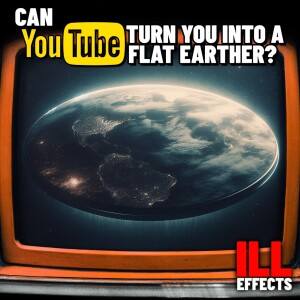
Thursday Mar 14, 2024
Can YouTube turn you into a Flat Earther?
Thursday Mar 14, 2024
Thursday Mar 14, 2024
Can the YouTube algorithm really turn you into a Flat Earther, or some other kind of radical conspiracy theorist? Rich takes Ben on a journey through terrible poetry, evangelical newsletters and 9/11 Truther videos. It turns out the “filter bubble” is an idea that might need bursting.
Show Notes:
Sources and links:
Blount, Lady Elizabeth (1898) “The ‘Why’ and ‘Because’” [poem included in her novel Adrian Galilio; Or, a Song Writer’s Story]
Bruns, Axel. (2019) Are Filter Bubbles Real? Polity Press.
Flat Earth News (1976-1994) [Newsletter of the Flat Earth Society]
Garwood, Christine (2008) Flat Earth: The History of an Infamous Idea. Pan Books.
Grusauskaite, Kamile, Luca Carbone, Jaron Harambam, and Stef Aupers (2023). “Debating (in) echo chambers: How culture shapes communication in conspiracy theory networks on YouTube,” New Media & Society. Online First.
Loose Change (2005) Dir. Dylan Avery. [Film]
Olshansky, Alex, Robert M. Peaslee and Asheley R. Landrum (2020) “Flat- Smacked! Converting to Flat Eartherism,” Journal of Media and Religion, 19(2).
Paolillo, John C. (2018) “The Flat Earth phenomenon on YouTube,” First Monday.
Pariser, Eli (2011) The Filter Bubble: What the Internet Is Hiding from You. Penguin Books.
“Phillip Is Absolutely Baffled by the Men Who Believe the Earth Is Flat | This Morning” [Video]
Roose, Kevin (2020) Rabbit Hole, New York Times [Podcast]
Roose, Kevin (2021) “How a Viral Video Bent Reality,” New York Times, September 8.
Russell, Jeffrey Burton (1991) Inventing the Flat Earth. Praeger.
Sales, Nancy Jo (2006) “Click Here for Conspiracy”, Vanity Fair, October 10.
Sunstein, Cass R. (2001) Republic.com. Princeton University Press.
Note: Journal articles are often behind paywalls. If you don't have institutional access but would like a copy of these papers please email Illeffectspod@gmail.com and we will happily send you a copy
Credits:
Hosts – Rich McCulloch and Ben Litherland
Music by - Brutalust (Colin Frank and Maria Sappho), recorded and mixed by Joe Christman
Creative producer – Rachel Wood
Technical producer – Caroline Pringle
Technical production – Colin Frank
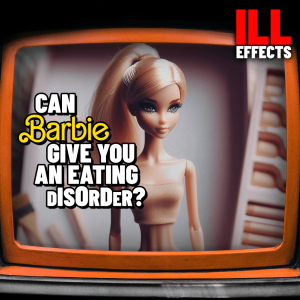
Thursday Feb 29, 2024
Does Barbie give girls eating disorders?
Thursday Feb 29, 2024
Thursday Feb 29, 2024
Barbie has been accused of a lot over the last 7 decades, but her most enduring criticism is that she sets unrealistic beauty standards for young girls. Ben talks Rich through the curious history of Barbie as a toy and a “role model”, the sometimes-warped world of body image research, and a creepy life-size doll that walks on all fours.
Show Notes:
[Video] CNN: Woman Makes Life-Size Barbie Look-Alike
Blood, S. K. (2004). Body Work: The Social Construction of Women's Body Image, Routledge.
Dockterman, Eliana (2016) ‘Barbie’s Got a New Body’, Time
Henfield, M. (1990) ‘The Anorexics Aged Eight’, Daily Mail.
[Video] Mattel Barbie Commercial (1959)
Rand, Erica. (1995). Barbie's Queer Accessories. Duke University Press.
Note: Journal articles are often behind paywalls. If you don't have institutional access but would like a copy of these papers please email Illeffectspod@gmail.com and we will happily send you a copy
Credits:
Hosts – Rich McCulloch and Ben Litherland
Music by - Brutalust (Colin Frank and Maria Sappho), recorded and mixed by Joe Christman
Creative producer – Rachel Wood
Technical producer – Caroline Pringle
Technical production – Colin Frank

ILL EFFECTS
Can a horror film turn kids into killers? Can music make you more productive? Can a video game cause dangerous driving? Dr Rich McCulloch and Dr Ben Litherland investigate the bad faith arguments, dodgy data, and moral panics behind claims that the media influence our behaviour and manipulate our minds. Each episode they take a deep dive into the past and present of the media that have been said to cause any number of effects, researching music, video games, movies, books, toys, and more. What power does the media really have? Find out in the first series of bi-weekly discussions of Ill Effects.

